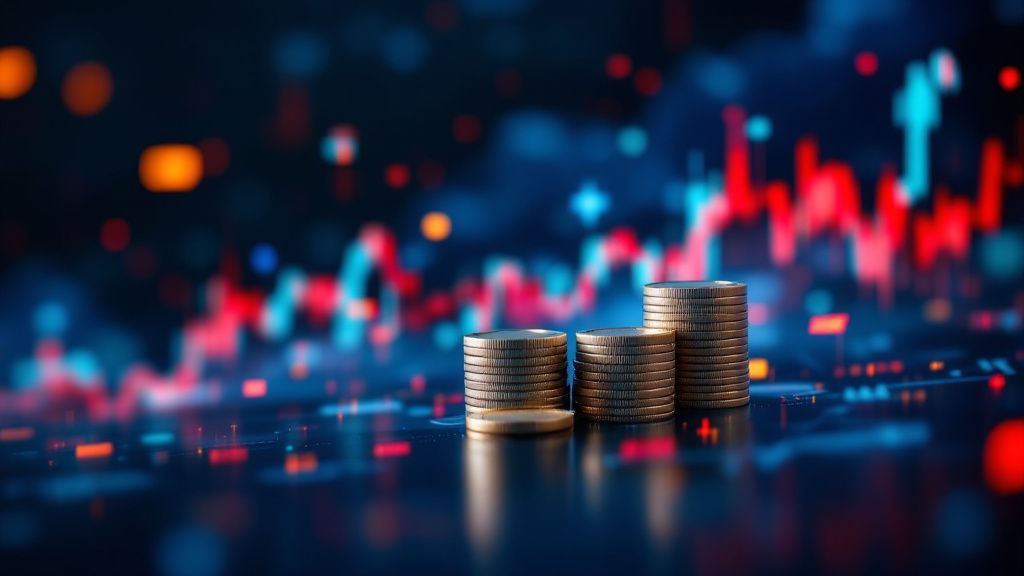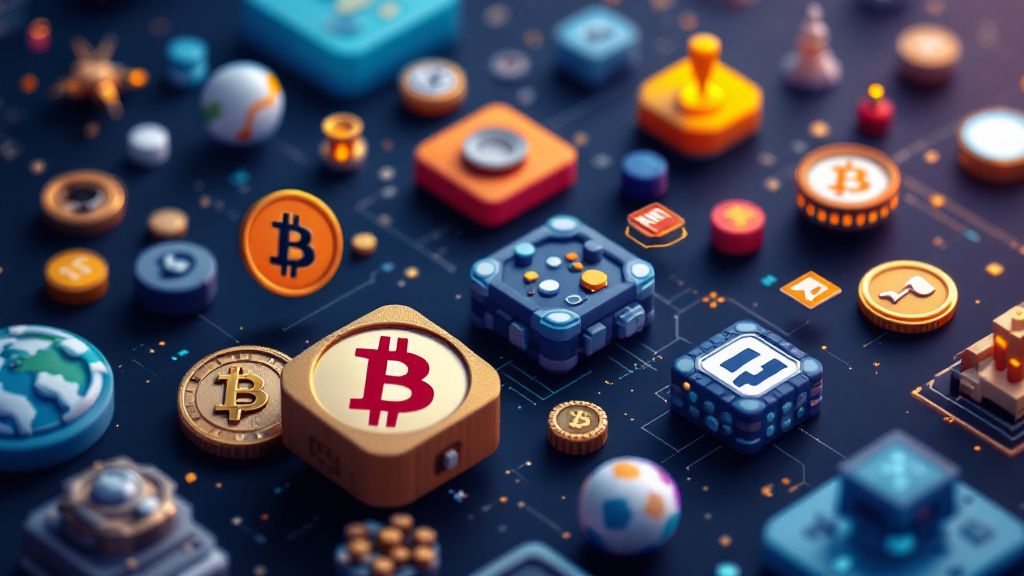In today's digital age, you're likely intrigued by the novel concept of non fungible tokens, an innovation capturing the imaginations of creatives and collectors alike. Unlike traditional currency or even other digital assets, these unique tokens represent individual digital items, offering you a new avenue for ownership in the digital realm. As you explore various nft platforms, you'll notice the variety of art, music, and virtual items available, each conferring its own distinctive value. An nft marketplace acts as your gateway to this world, a place where these tokens are bought, sold, and exchanged, opening a myriad of possibilities for enthusiasts like you seeking to partake in this groundbreaking digital trend.

Understanding NFTs and Their Unique Properties
Non fungible tokens, unlike other assets, are defined by their uniqueness and indivisibility. You can't exchange one for another equally, as each NFT holds its own distinct value and identity. This makes them particularly fascinating, allowing you to own digital items that range from art pieces to in-game items with an immutable proof of ownership and authenticity recorded on the blockchain.
The current state of NFTs reveals a trend towards diversification and expansion across various fields. From digital art booming on NFT platforms to the integration of NFTs in gaming and music, you're witnessing an increasing adoption of these unique assets. This reinforces the idea that as the digital landscape evolves, NFTs continue to gain prominence and reshape the concept of ownership.
Navigating an nft marketplace provides you with insights into the dynamic market behavior and burgeoning communities forming around NFTs. Each marketplace offers its own ecosystem of creators and collectors, contributing to a vibrant, ever-growing digital economy. As you delve deeper, you'll discover not just a new way of investing and collecting but also a novel interaction with the digital assets that capture your imagination.

How NFTs Are Revolutionizing the Art World
The intersection of non fungible tokens and the art world has sparked a revolution in how art is created, sold, and appreciated. Where traditional art markets faced limitations in access and reach, NFTs break these barriers, granting you the opportunity to explore and acquire digital art pieces from creators worldwide. This transformation has unlocked a new horizon for artists, allowing them to retain ownership over their work and engage directly with their audience.
NFT platforms have become central hubs for this burgeoning digital art movement. As you navigate these platforms, you'll find a diverse range of offerings, from static images to dynamic generative art pieces. This democratization of art sales empowers both emerging and established artists to reach an expanded audience, providing opportunities that were once only available to a limited few within conventional art circles.
For example, digital artist Beeple made headlines when his NFT artwork "Everydays: The First 5000 Days" sold for a staggering $69 million at Christie’s auction house. This watershed moment exemplifies the potential for NFTs to redefine market values and artist recognition on a global scale. As a collector, such high-profile sales underscore the significance and growing acceptance of digital artistry as a legitimate form in the art world.
Your exploration of an nft marketplace introduces you to a community of art enthusiasts and creators, all contributing to an evolving narrative of digital ownership. These marketplaces are more than mere sales platforms; they are dynamic ecosystems where you can discover the latest trends, innovative works, and unique pieces that expand your perception of what art can be. It's a shift that not only changes how art is valued but also how you, as an observer or collector, interact with and support the art world.

The Role of NFTs in Music and Entertainment
Non fungible tokens have introduced a dynamic shift in the music and entertainment industries, providing artists with new avenues for creativity and revenue. In this digital era, NFTs allow musicians to release exclusive content, such as limited edition albums, concert tickets, and unique experiences, directly to fans. Through nft platforms, artists can establish a closer connection with their audience, transforming traditional fan-artist interactions.
Imagine NFTs as keys unlocking a backstage pass to the music and entertainment world. Just like an exclusive club offers its members privileges, NFTs grant you access to something rare and personalized. These tokens enable artists to monetize their work in innovative ways while providing you with unique opportunities to own pieces linked personally to the creators you admire.
Exploring an nft marketplace reveals a thriving ecosystem where music and entertainment merge. Here, artists can issue NFTs that offer privileged access or ownership benefits, creating a deeper layer of engagement with you, the fan. This rising trend signifies a shift in how content is distributed and consumed, with NFTs serving as a catalyst for evolving the future of entertainment, ensuring artists and fans can connect in unprecedented and meaningful ways.

NFTs Beyond Art: Real Estate and Virtual Worlds
The evolution of non fungible tokens has extended beyond the realm of art, permeating industries like real estate and virtual worlds. With NFTs, you can own virtual plots of land, participate in digital economies, and even engage in experiences that challenge the boundaries of what ownership means in the virtual space. These tokens give you tangible control over digital property, much like physical real estate investments.
While many believe that the application of NFTs should remain within art and collectibles, there's a strong case for their integration into real estate and virtual environments. As you navigate virtual worlds such as Decentraland or The Sandbox, NFTs empower you to purchase, develop, and potentially monetize virtual properties, blurring the lines between the digital and physical realms.
An nft marketplace often includes a section dedicated to these virtual assets, where you’ll find opportunities not just for investment but for creativity and social interaction. Here, you can build thriving communities, host digital events, or showcase talent, all within a virtual ecosystem. This expanding application of NFTs in real estate and virtual worlds marks a significant shift in how digital ownership is perceived, embracing a future where virtual experiences are as valuable as physical ones.

Investing in NFTs: Potential Risks and Rewards
When delving into the world of non fungible tokens, you are presented with both risks and rewards. NFTs have captured the intrigue of investors seeking distinct digital assets that can appreciate in value. However, like any investment, you face the possibility of price volatility and the need to understand market dynamics effectively, which can affect your financial outcomes.
To truly understand investing in NFTs, you need to shift your mindset from traditional asset management to embracing digital ownership as the future. This new perspective involves recognizing the inherent uniqueness of each NFT and the diverse opportunities they present. As you navigate the intricacies of nft platforms, the emphasis should be on how these digital assets fit into your broader investment strategy.
An nft marketplace can be both a wealth of opportunity and a source of potential pitfalls. Astute investors like you assess factors such as rarity, creator credibility, and community engagement when deciding on the right NFT to buy. The rewards can be substantial, as the NFT market continues to evolve, potentially offering you favorable returns on your investments if approached with informed and strategic considerations.
Environmental Impact: Addressing NFT Criticisms
The environmental impact of non fungible tokens remains a widely discussed topic, primarily because of the energy consumption associated with the blockchain technology that supports them. As you explore the nuances of NFTs, it's crucial to recognize that this burgeoning industry is tied to concerns over carbon emissions due to the energy-intensive processes used in their creation and transaction.
Many critics argue that the digital art market facilitated by platforms contributes to environmental degradation, given the high levels of energy consumption. However, it's important to consider the initiatives underway to address these criticisms. Efforts such as transitioning to proof-of-stake systems and utilizing renewable energy sources are steps towards reducing the environmental footprint of NFTs.
Looking ahead, the NFT industry is expected to evolve with a stronger focus on sustainability. Innovations in blockchain technology seek to minimize ecological impacts while still providing the benefits of secure and decentralized transactions. As more creators and platforms prioritize eco-friendly practices, you can anticipate a shift towards a more environmentally conscious NFT ecosystem, catering to both ecological concerns and the voracity for digital ownership.


.jpg)

.jpg)
.webp)
.webp)
.webp)


.svg)









